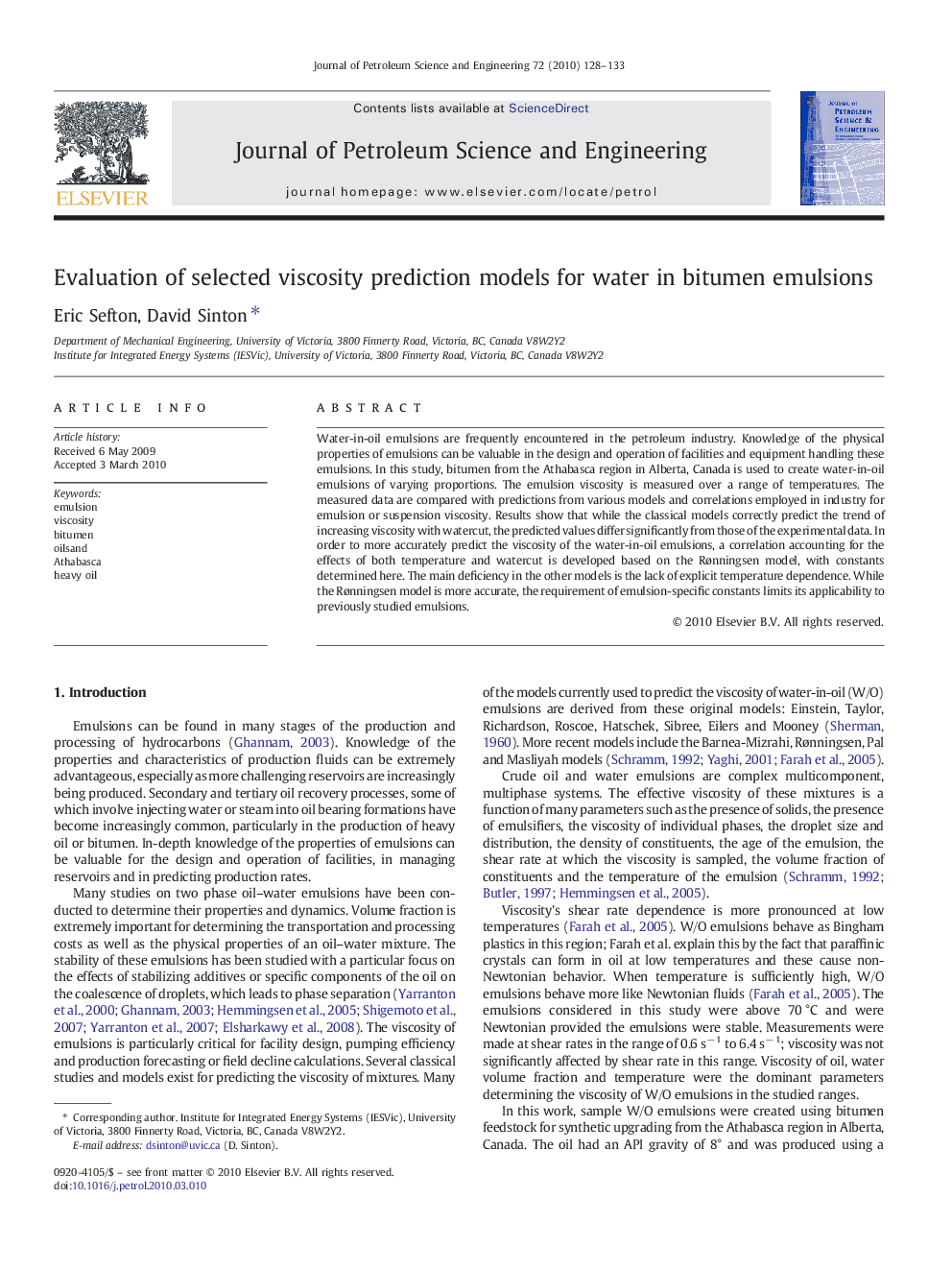| Article ID | Journal | Published Year | Pages | File Type |
|---|---|---|---|---|
| 1755762 | Journal of Petroleum Science and Engineering | 2010 | 6 Pages |
Water-in-oil emulsions are frequently encountered in the petroleum industry. Knowledge of the physical properties of emulsions can be valuable in the design and operation of facilities and equipment handling these emulsions. In this study, bitumen from the Athabasca region in Alberta, Canada is used to create water-in-oil emulsions of varying proportions. The emulsion viscosity is measured over a range of temperatures. The measured data are compared with predictions from various models and correlations employed in industry for emulsion or suspension viscosity. Results show that while the classical models correctly predict the trend of increasing viscosity with watercut, the predicted values differ significantly from those of the experimental data. In order to more accurately predict the viscosity of the water-in-oil emulsions, a correlation accounting for the effects of both temperature and watercut is developed based on the Rønningsen model, with constants determined here. The main deficiency in the other models is the lack of explicit temperature dependence. While the Rønningsen model is more accurate, the requirement of emulsion-specific constants limits its applicability to previously studied emulsions.
